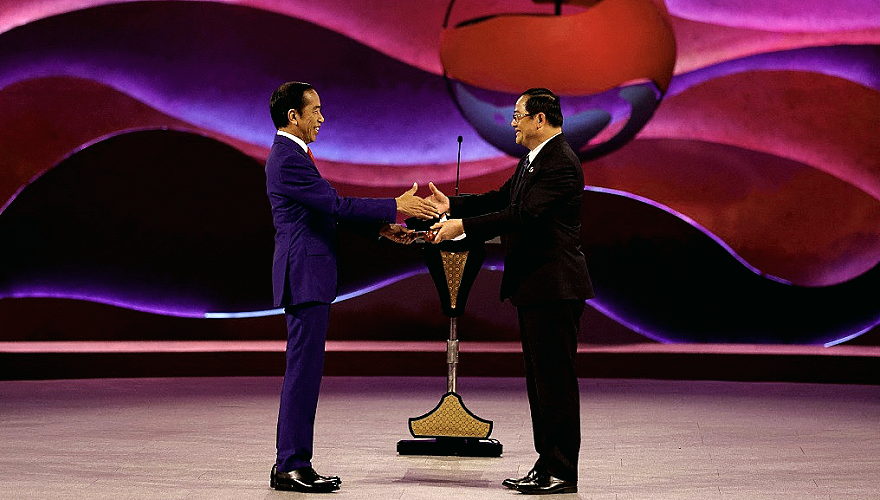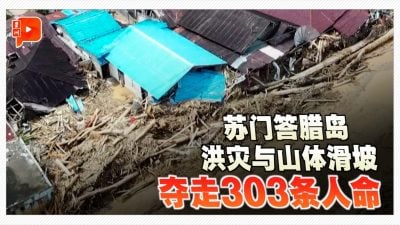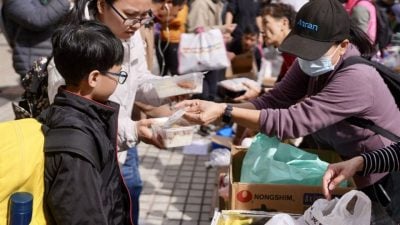
In welcoming Laos as the 2024 ASEAN chair, fellow member states should take real measures to not only help Vientiane realise its agenda, but also support its bid to boost the country’s tourism through its Visit Laos Year 2024 programme.
This is the third time Laos is helming the 10-member trade bloc, after its previous turns in 2004 and 2016.
Despite its smaller population and economic size compared with ASEAN’s founding nations, the region’s only landlocked country proved its mettle when it assumed the chairmanship in the past.
However, it would be unfair to expect Laos to offer major breakthroughs that help the group solve its perennial problems, when big neighbours like Indonesia could not.
We are confident that Laos will address at least three major issues.
First, ASEAN leaders decided at last year’s summit that they would not allow Myanmar’s military regime to host any summits and meetings for an indefinite time, including in 2026, when the Philippines will chair the bloc instead of Myanmar as in the original rotation.
Until now, junta leader Gen. Aung Min Hlaing has been demonstrably unable to respect the Five-Point Consensus as the basis of the solution to the Myanmar crisis, which includes bringing an immediate end to violence in the country and hold a dialogue among all parties.
At the most recent summit in Jakarta, the region’s leaders set up a troika on Myanmar with Laos as the current chair, along with Indonesia as the previous chair and Malaysia as the 2025 chair.
Its purpose is very clear: to prevent the current chair from violating ASEAN’s decision on Myanmar.
Second, Laos will stick to the bloc’s position on the South China Sea dispute.
Laos is not a claimant, while Brunei, Malaysia, the Philippines and Vietnam claim parts of the resource-rich sea.
China will naturally seek every path to try and make ASEAN soften its stance on the long-standing issue.
One of the worst ASEAN summits took place in 2012, when then-Cambodian prime minister Hun Sen blocked the inclusion of the South China Sea issue in the leaders’ joint statement.
Let that be the first and last scandal for ASEAN, and we are confident that Laos will not commit such a blunder, as it proved in 2016.
This year, ASEAN faces much more complicated challenges not just in the region, such as the conflict in Myanmar and the rising tension between the Philippines and China over the South China Sea, but also the growing great power rivalry in its backyard, the Taiwan issue and the arms race in the Asia-Pacific.
North Korea’s nuclear threat also poses a danger to peace in Southeast Asia.
As the 2024 ASEAN chair, Laos has decided on the theme “Enhancing Connectivity and Resilience”, reflecting its ambition to create a more connected and resilient bloc through the united effort of other member states.
The first pillar involves enhancing regional cooperation, expanding ASEAN’s external relations and strengthening ASEAN unity and centrality in the evolving regional architecture for regional peace, stability and development.
The second is to enhance connectivity, narrow the development gap, promote carbon neutrality and advance digital transformation and economic integration, while the third is to promote people-to-people exchanges and cooperation for climate resilience and health development.
Last but not least, Laos has the mandate to accelerate the admission of Timor-Leste as ASEAN member.
In 1996, then-president Soeharto succeeded in convincing his regional counterparts to welcome Laos, Myanmar and Cambodia to the group, with the first two joining in 1997 and the latter in 1999.
Soeharto thought then that this bring the whole region into the ASEAN fold. But history proved him wrong in 1999, when East Timor decided to separate from Indonesia and eventually became the sovereign nation of Timor-Leste on May 20, 2002.
Congratulations to Laos on this year’s ASEAN chairmanship, under which the governments and peoples of Southeast Asia hope that the bloc can play a more pivotal role in both regional and global affairs.
ADVERTISEMENT
ADVERTISEMENT








































